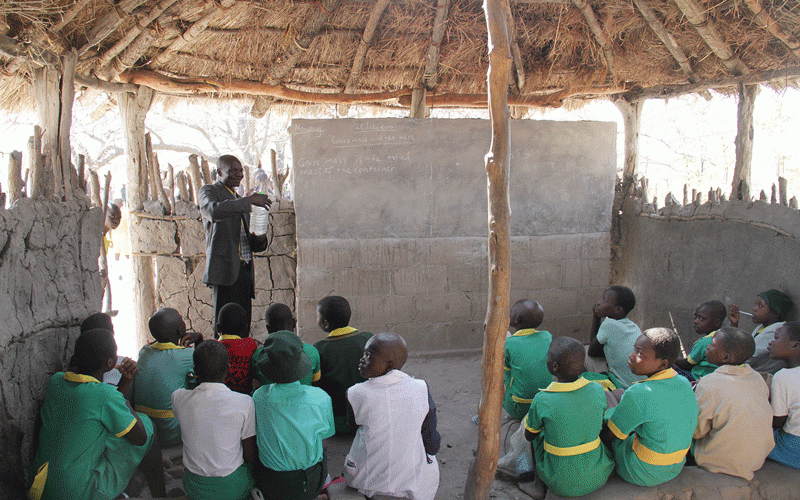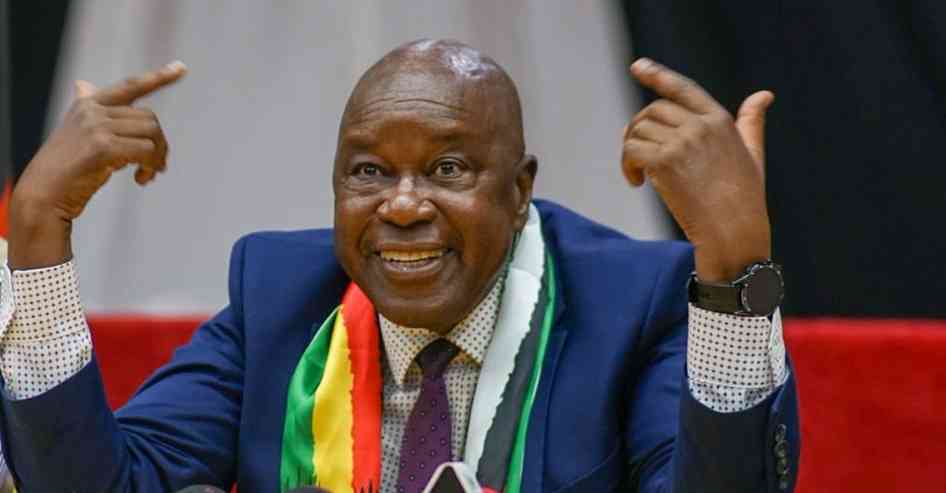
WHILE the Zimbabwe Coalition on Debt and Development commends the efforts undertaken by government to fight poverty, the problem appears to be on an upward trend.
This has been exacerbated by the adverse impacts of COVID-19 pandemic, climate change and soaring debt levels.
Resultantly, the country has not made significant progress in poverty reduction, reducing the widening inequalities and attainment of SDGs.
It is, however, critical to understand that the disproportionate impact of these challenges on vulnerable populations, particularly women, children, displaced people and people with disabilities is of great concern and measures should be taken to redress the situation.
To this end, social protection becomes critical in cushioning the vulnerable and marginalised sectors of the population.
In the 2023 budget, government allocated $50,4 billion (1,1% of the budget) for the provision of its mainstream social protection programmes.
These include the harmonised social cash transfer, food deficit mitigation programmes, basic education and health assistance, child protection services, support to the elderly and persons with disabilities.
A trend analysis of Zimbabwe`s social expenditure since 2017 shows that the government has not made sufficient efforts to meet the 4,5% social expenditure benchmark.
- Young entrepreneur dreams big
- Chibuku NeShamwari holds onto ethos of culture
- LSU students win innovation prize
- Mhofela finally drops album
Keep Reading
Of the six budget years reviewed, the highest allocation towards social expenditure was in 2020 when government channelled 3,88% to social protection.
While government has failed to channel significant resources towards social protection, the following contextual issues remain worrisome if the country desires to move towards poverty eradication:
lOver 7,9 million people are in extreme poverty
l3,8 million rural people and 1,6 million urban people facing food insecurity
l4,6 million children with severe acute malnutrition,
l4,8 million children in need of Basic Education Assistance Module.
If not given the urgent and deserving attention the increasing food insecurity, rising extreme poverty and rising vulnerabilities post COVID-19 will continue to be the prime setbacks for government’s effort towards social protection.
If the situation is not rectified, Zimbabwe’s ambitious 2030 vision, which aims to foster inclusive economic growth and address poverty resolutely with an initial poverty rate target of 62% by 2030 from 62,5% in 2012 remains a pipedream.
This six-year trend shows that Zimbabwe has not achieved the 4,5% benchmark which is central to reducing poverty and vulnerability in Zimbabwe.
Further, a Unicef Zimbabwe Annual Report for 2021 notes that Zimbabwe has weak child protection systems that have successfully failed to ensure the safety and wellbeing of children.
According to the report, “4,8 million Zimbabwean children live in poverty and 1,6 million children live in extreme poverty”.
Child protection, therefore, remains a key area of concern as children have been exposed to drug and substance abuse and early marriages, with approximately 34% of girls under the age 18 already married, while 5% of girls under the age of 15 are married.- Zimbabwe Coalition on Debt and Development
Turn the tide and stop being a net importer
ZIMBABWE is over-relying on primary products which are also being exported in their raw form.
This is reducing potential export earnings and shipping local jobs abroad.
The nation has also become a net importer as competitiveness of domestic firms has been suppressed by inconsistent policy-making, fragile currency and chronic inflation fuelling costs of doing business.
As such, there is a need for an adaptive industrial policy which advances value chains and product beneficiation.
Such an industrial policy will also elevate co-ordination between the industry and government agencies, and the former receive protections, grants, loans and tax incentives.
On debt audits, there is a need to undertake an independent public debt audit that will inform the scale and nature of the country’s debts, which are often not transparently publicised.
An audit will also become a building block to popularise discussion about the legitimacy of certain debts and whether they should be repaid.
Further, Zimbabwe needs to revamp its public debt management, a process of establishing and executing a strategy to ensure that government’s financing needs and its payment obligations are met at the lowest possible cost and consistent with a prudent degree of risk.
Also, sound legal and regulatory frameworks seek to promote transparent, predictable, and non-discriminatory processes.
The legal and regulatory framework matrix category covers broad issues related to the laws (family, property, finance, workplace, pay, etc), regulations, and policies passed by governments, including stakeholder participation and input into the decision-making process; the impact, or lack thereof, of these government efforts on citizens; and mechanisms for citizens to provide feedback.- C.O.D.D
Zim still a long way from attaining stable prices trajectory
ZIMBABWE lapsed into hyperinflation twice during the last decade.
As of November 2021, the nation was among the seven countries with three-year cumulative inflation rates exceeding 100%.
However, after reaching an annual high of 285% last August, price inflation seems to have reversed course.
The latest official statistics show the year-on-year inflation rate for October 2022 at 268,8%, shedding 11,6 percentage points from the September 2022 outturn of 280,4%. Also, the statistics show a significant moderation of month-on-month price inflation since July 2022.
For the month under review, monthly prices fell by 0,3 percentage points to settle at 3,2% from the 3,5% reported in September 2022.
As alluded to earlier, the moderation of prices is largely credited to government policy actions that have managed to clamp excessive Zimdollar depreciation in alternative markets.
These include setting the Reserve Bank of Zimbabwe policy rate at 200% (a global record), high statutory reserve requirements, the introduction of gold coins, increased relaxation of the willing-buyer willing-seller interbank market, entrenching multicurrency regime into law, tightening equity market trading rules, suspension of import duty on basics, and introduction of a value for money process to increase due diligence in public procurement processes.
Also, despite them starting to spike in November 2022, global crude oil prices which were suppressed in the previous three months largely helped to exert downward pressure on imported inflation through fuel prices.
Fuels constitute a lion’s share of Zimbabwe’s total monthly imports.
While the obtaining price situation in recent months is encouraging, it is worrisome to note that parallel market rates have started to uptick again showing that it is still a long way for the nation to attain a sustained stable price trajectory.
The fragility is largely emanating from low market confidence in Zimdollar and a lack of trust in policymakers.
Whereas the prevailing high-interest rates are reducing speculative borrowing tendencies, they are also ballooning the cost of borrowing which in turn subdues industrial activity.
This occurs at a time savings uptake in Zimbabwe is dwindling as evidenced by an 11-percentage point decline in adults’ savings rate between 2014 (47%) and 2022 (36%).
As such, most businesses with antiquated production technologies are failing to retool, hence being rendered regionally uncompetitive.
The situation risks cementing Zimbabwe’s position as a regional supermarket economy thus increasing US dollar demand at the expense of the Zimdollar.
Also, the embrace of command economics by the government amid high perceived public corruption and illicit financial flows is causing immense pricing distortions in the market. - Zimcodd











